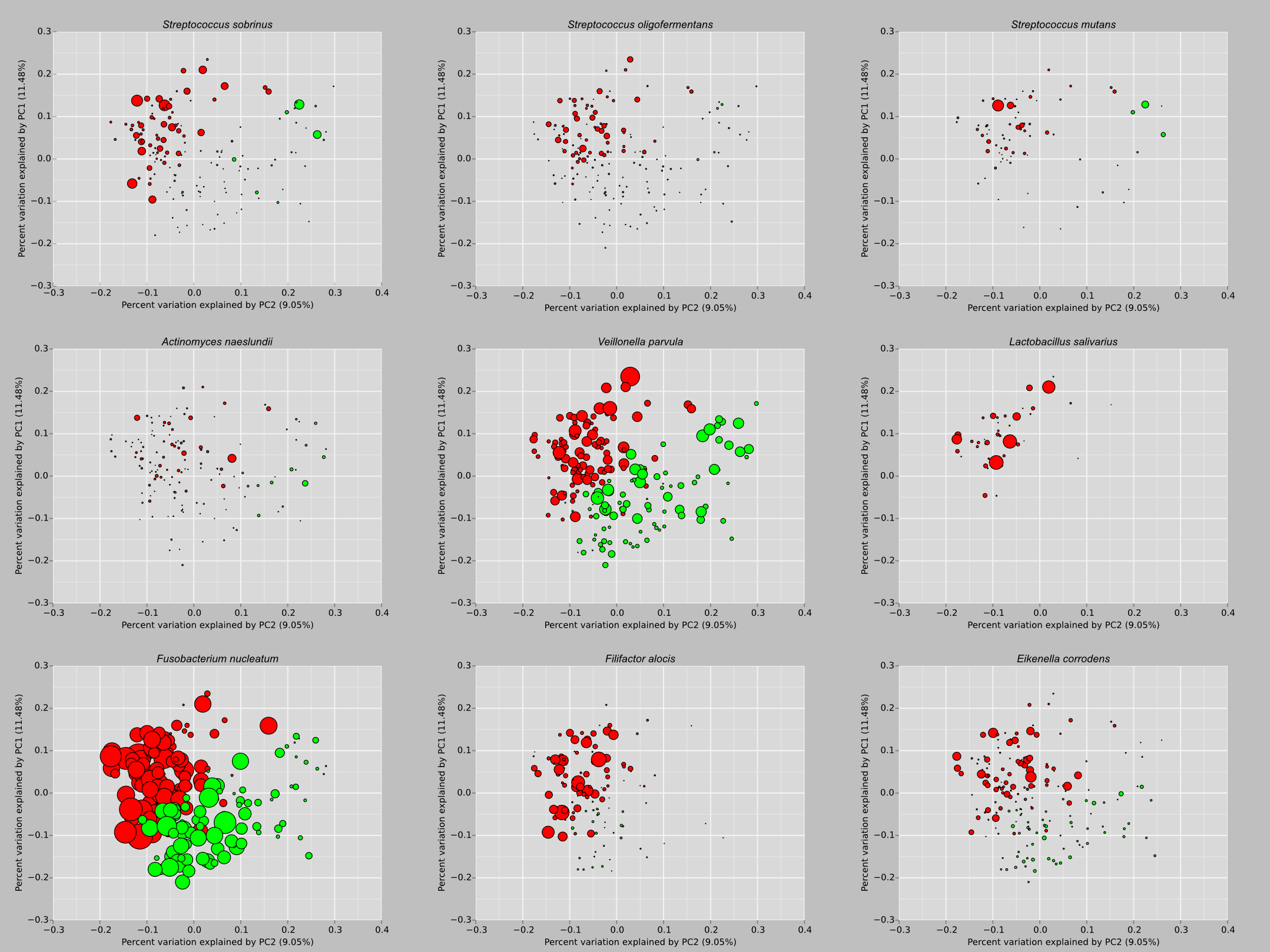PCoA_bubble.py¶
Create a series of Principle Coordinate plots for each OTU in an input list where the plot points are varied in size by the relative abundance of the OTU (relative to either Sample or the total contribution of the OTU to the data set.
usage: PCoA_bubble.py [-h] -i OTU_TABLE -u UNIFRAC -d NAMES_COLORS_IDS_FN -m MAPPING -c MAP_CATEGORY [-o OUTPUT_DIR] [--scaling_factor SCALING_FACTOR] [-v]
Required Arguments¶
-
-iOTU_TABLE,--otu_tableOTU_TABLE¶ The biom-format file with OTU-Sample abundance data.
-
-uUNIFRAC,--unifracUNIFRAC¶ Principle coordinates analysis file. Eg. unweighted_unifrac_pc.txt
-
-dNAMES_COLORS_IDS_FN,--names_colors_ids_fnNAMES_COLORS_IDS_FN¶ The name of an input data file containing three items: Line 1: a tab-separated list of display names for the different types in the specified mapping category (–mapping_category), Line 2: a matching tab-separated list of hexadecimal colors for each of the category types, Lines 3-end: a tab-separated pair specifying OTU ID and OTU Name. Each entry will get a separate PCoA plot under a file with the name of the OTU.
-
-mMAPPING,--mappingMAPPING¶ The mapping file specifying group information for each sample.
-
-cMAP_CATEGORY,--map_categoryMAP_CATEGORY¶ Any mapping category, such as treatment type, that will be used to group the data in the output plots. For example, one category with three types will result in three different point sets in the final output.
Optional Arguments¶
-
-oOUTPUT_DIR,--output_dirOUTPUT_DIR¶ The directory to output the PCoA plots to.
-
--scaling_factorSCALING_FACTOR¶ Species relative abundance is multiplied by this factor in order to make appropriate visible bubbles in the output plots. Default is 10000.
-
-v,--verbose¶ Displays species name as each is being plotted and stored to disk.
-
-h,--help¶ Show this help message and exit
Example plot¶
PCoA bubble plots of subgingival microbiome pathogens of smokers [1].

Citation:
| [1] | The Subgingival Microbiome of Clinically Healthy Current and Never Smokers. Matthew R Mason, Philip M Preshaw, Haikady N Nagaraja, Shareef M Dabdoub, Anis Rahman and Purnima S Kumar; doi: 10.1038/ismej.2014.114 |